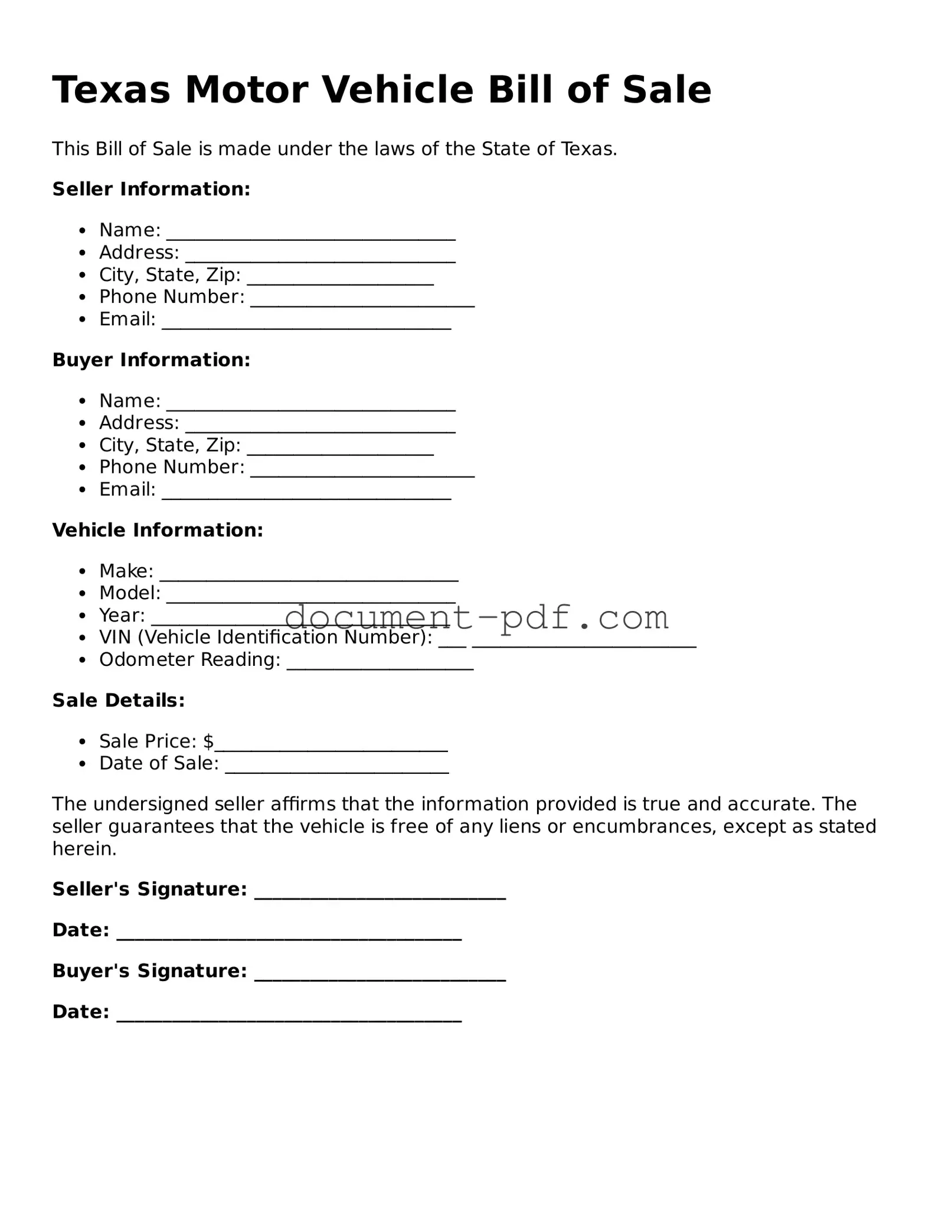Texas Motor Vehicle Bill of Sale
This Bill of Sale is made under the laws of the State of Texas.
Seller Information:
- Name: _______________________________
- Address: _____________________________
- City, State, Zip: ____________________
- Phone Number: ________________________
- Email: _______________________________
Buyer Information:
- Name: _______________________________
- Address: _____________________________
- City, State, Zip: ____________________
- Phone Number: ________________________
- Email: _______________________________
Vehicle Information:
- Make: ________________________________
- Model: _______________________________
- Year: ________________________________
- VIN (Vehicle Identification Number): ___ ________________________
- Odometer Reading: ____________________
Sale Details:
- Sale Price: $_________________________
- Date of Sale: ________________________
The undersigned seller affirms that the information provided is true and accurate. The seller guarantees that the vehicle is free of any liens or encumbrances, except as stated herein.
Seller's Signature: ___________________________
Date: _____________________________________
Buyer's Signature: ___________________________
Date: _____________________________________
